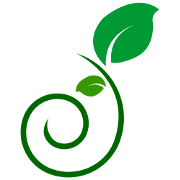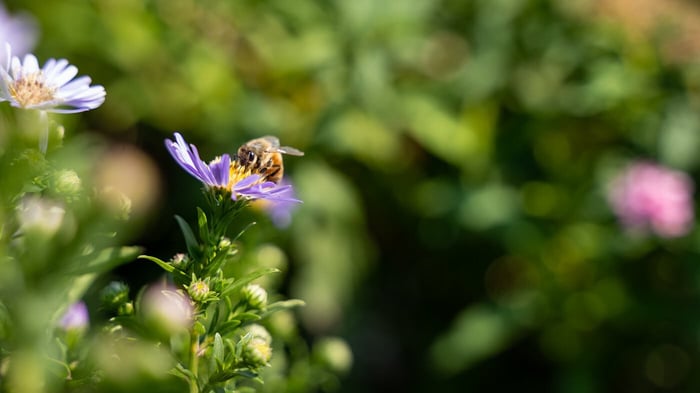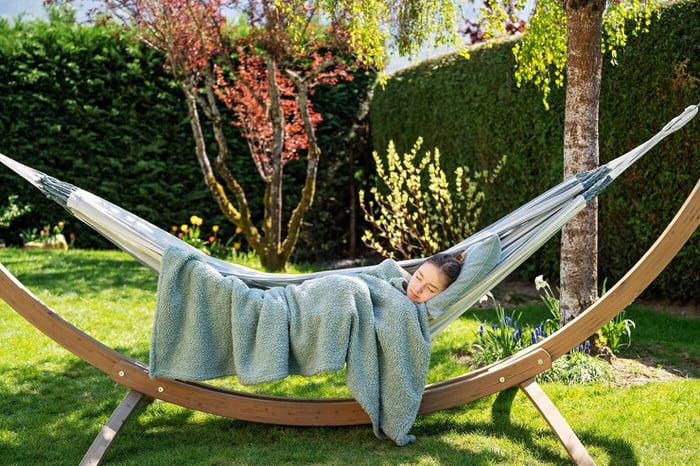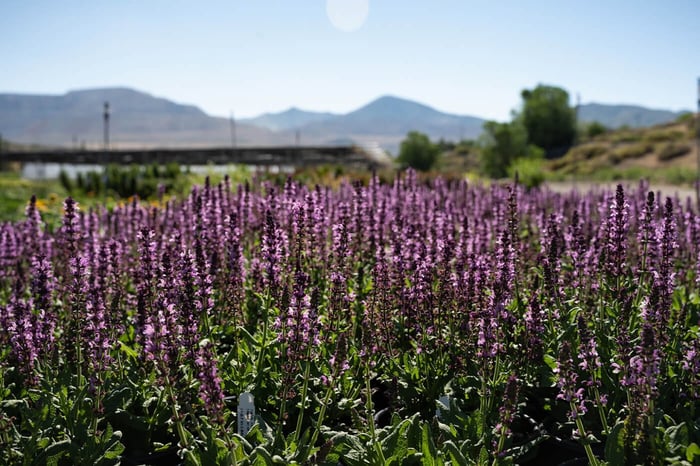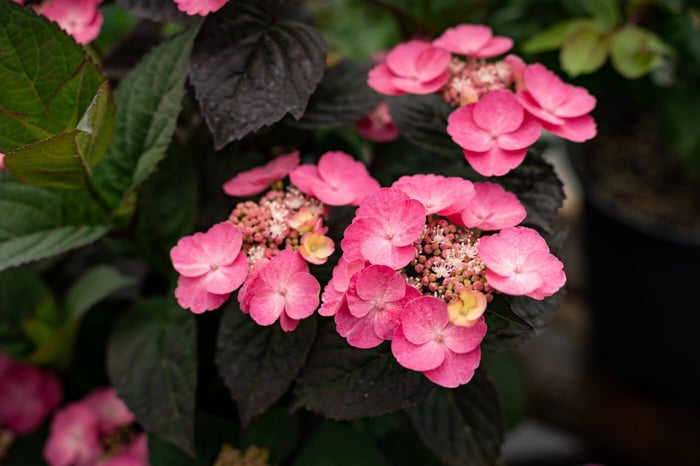Many of us love butterflies, but we have a hard time with caterpillars eating our flowers. It’s easy to forget that we can’t have one without the other. The circle of life needs to remain intact. One way to help ensure that happens is by including native plants in your landscape. Many species of butterflies are very specific about the plants they eat as caterpillars. Monarch Butterfly caterpillars, for example, only eat milkweed, a plant native to Utah. Butterflies aren't only beautiful and fascinating, they are also highly effective pollinators, so it pays to provide for their needs.
Monarch Butterfly caterpillar eating milkweed, a Utah native plant.
Outside of sunlight and water, pollinators are key to life on this planet. We couldn’t eat without them. We couldn’t grow fruits or vegetables if there were no insects to pollinate our plants and trees. For that matter, herbivores would quickly run out of food if the grasses and other plants they rely on weren’t pollinated. It’s true that some plants are self-pollinating, and the wind and birds help a little, but the majority of the work is done by insects meticulously moving from flower to flower and plant to plant.
Native plants are often pollinator favorites, such as this 'Woods Blue' Aster.
One way to ensure that our pollinator population remains healthy is to plant native plants. Native plants and local pollinators evolved together. Insects need certain plants to sustain their life cycle. Plants that larvae eat and the plants adult insects pollinate are often the same, but not always. With a little research, you can provide the ideal garden to attract and support pollinators. Many non-native plants that are adapted to this area have been adopted by native pollinators, but it’s still important to supply insects with the plants that they have relied on for centuries. After all, it isn't only the insects we need to consider.

Rose of Sharon is not native to Utah, but it grows well here and is highly beneficial to pollinators.
The more plants that are available for native insects, the more birds we’ll have in our neighborhoods. Birds nest when their food supply is at its peak. For most nesting birds, that means insects, including insects in their larval form. We can help sustain the nesting birds in our region by growing plants native to this area that provide fruits or seeds, and support the insects that native birds need to thrive. After all, native plants, local pollinators, and the birds that eat the insects in this area all evolved together. Because of that, native plants have adapted to tolerate and even benefit from native insects. The birds that frequent this area live here because of the native plants and insects they can access.
Wrens eat a diet that is almost exclusively insects and caterpillars. You can attract them into your yard by planting thick shrubs, such as Chokeberry, for their protection.
Of course, not all insects are beneficial. Some are outright harmful. It’s important that we find a balance between pest management and maintaining a healthy insect population. It would be wonderful if insecticides only killed the pest insects and left the beneficial insects alone, but that isn’t how insecticides work. In fact, the result is often the opposite. Insecticides will kill most of the insect life in the area where they are used, creating a vacuum of insect life in that location. That insect vacuum is often filled with more pests and fewer beneficial insects than you had before you began treatment.
That doesn’t mean that you should never use insecticides. They were invented for a reason. Properly applied, insecticides can increase the quality and quantity of the foods you grow, and they can keep your ornamental plants healthy and beautiful. But you need to be mindful of the ecology surrounding you. If one element of the circle of life struggles, the whole thing can fall apart.

This 'Desert Eve' Terra Cotta Yarrow is a stunning cultivar that is related to Common Yarrow, a Utah native. There are dozens of yarrow options available in our catalog.
One way to help ensure the food chain remains intact is to include native plants in your planter beds, both for the fruits or seeds they supply to native and migratory birds, and the insects they support. If it helps, you can keep your native garden separate from your vegetable garden, so even if you need to intervene with pesticide for your edible plants, you can keep your native garden as pesticide free as possible.
The hope is that you can have a yard that is inviting—a place that draws you in and attracts friends and family to its beauty. Part of the beauty of the outdoors is the wildlife it supports. When you’re surrounded by beautiful plants you can literally feel their healing energy. But when you add the hum of life into your garden—birds, butterflies, bees, and other animals—your outdoor escape is complete. Now you can enjoy the full benefits of nature.

